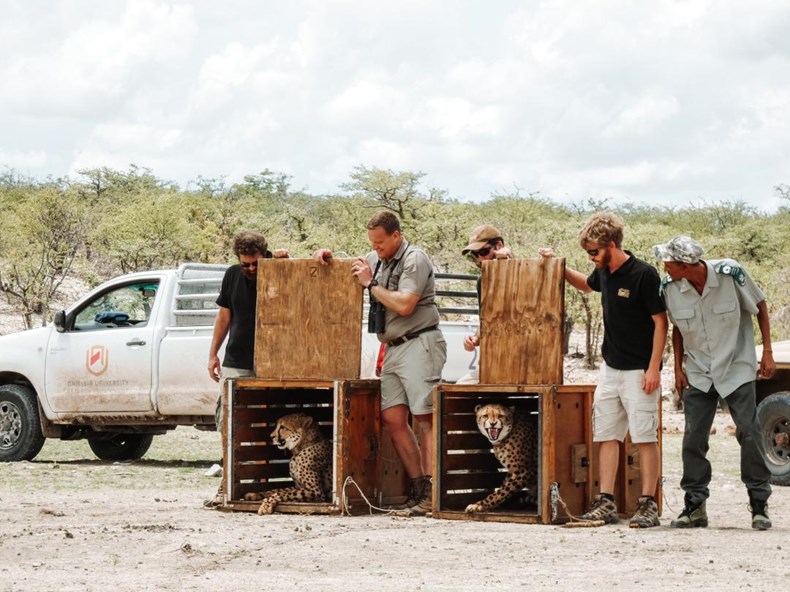A Race Against Time

NATURAL SELECTION AND ETOSHA HEIGHTS PRIVATE RESERVE SUPPORT THE RELOCATION OF THREATENED CHEETAH.
Assisted by a number of anatomical adaptations for speed - including a light streamlined body, deep chest, long thin legs, elongated spine and tail, and protracted claws - it is ironic that the world’s fastest land mammal is in a race against time!
Cheetah populations are declining globally, due to numerous threats to their survival such as habitat fragmentation, human-wildlife conflict and declining prey availability.
Cheetah are currently listed as Vulnerable by the IUCN, with a call to have its status changed to Endangered due to declining global populations. Its very name cheetah means "large, spotted cat of India" and is testament to its far greater historic distribution throughout Africa, Asia and Europe.
The current global population is estimated to be 7000, and apart from a small population in North-eastern Iran, the majority are in sub-Saharan Africa - with Namibia having the largest free roaming (outside of formal protected areas) population of cheetah in the world.
Approximately 76% of the cheetah’s range is in unprotected areas, and for a species with home ranges averaging 554–7,063 km2, conservation work outside formally protected areas is critical to their survival. In other words, they do not only need space but also concerted efforts from organizations to make cheetah conservation a reality. This ranges from habitat rehabilitation to conservation education to the reduction of farmer-cheetah conflict through the introduction of cheetah-friendly herding practices. See the Cheetah Conservation Foundation website for a full description of cheetah conservation.
Etosha Heights is not only one of the largest private reserves in Namibia (encompassing approximately 60,000 hectares and sharing its northern boundary with Etosha National Park), but its wildlife management and recent conservation endeavors have created an environment that make it an ideal location for cheetah conservation.
It is into this environment that Natural Selection supported the release of two male cheetah, rescued from Kalahari farmland. The release took place on 16 February and was co-facilitated with the Cheetah Conservation Foundation (CCF) who rescued these cheetah, the Namibia University of Science and Technology (NUST), Giraffe Conservation Foundation (GCF), Etosha Heights Private Reserve and Ministry of Environment, Forestry and Tourism.
For some video footage of the release please click here
The NUST Biodiversity Research Centre (BRC) has appointed a student who will monitor the cheetah’s daily movements for the next 6 months to ensure the relocation is successful and gain an understanding of their preferred prey and habitat use. This work forms part of an ongoing long-term conservation research programme at Etosha Heights and Etosha National Park that collects data on interactions between predators and prey.
This programme is a collaborative partnership between NUST’s BRC, GCF, Etosha Heights and others. This interdisciplinary conservation approach is a testament that collective efforts can secure the future of cheetah and other wildlife in Africa.
To learn more about the organizations that have made this initiative a reality, please see: NUSTBRC, NUST, CCF, GCF
For all enquiries please contact Lindsy
[email protected]
www.naturalselectionfoundation.org
